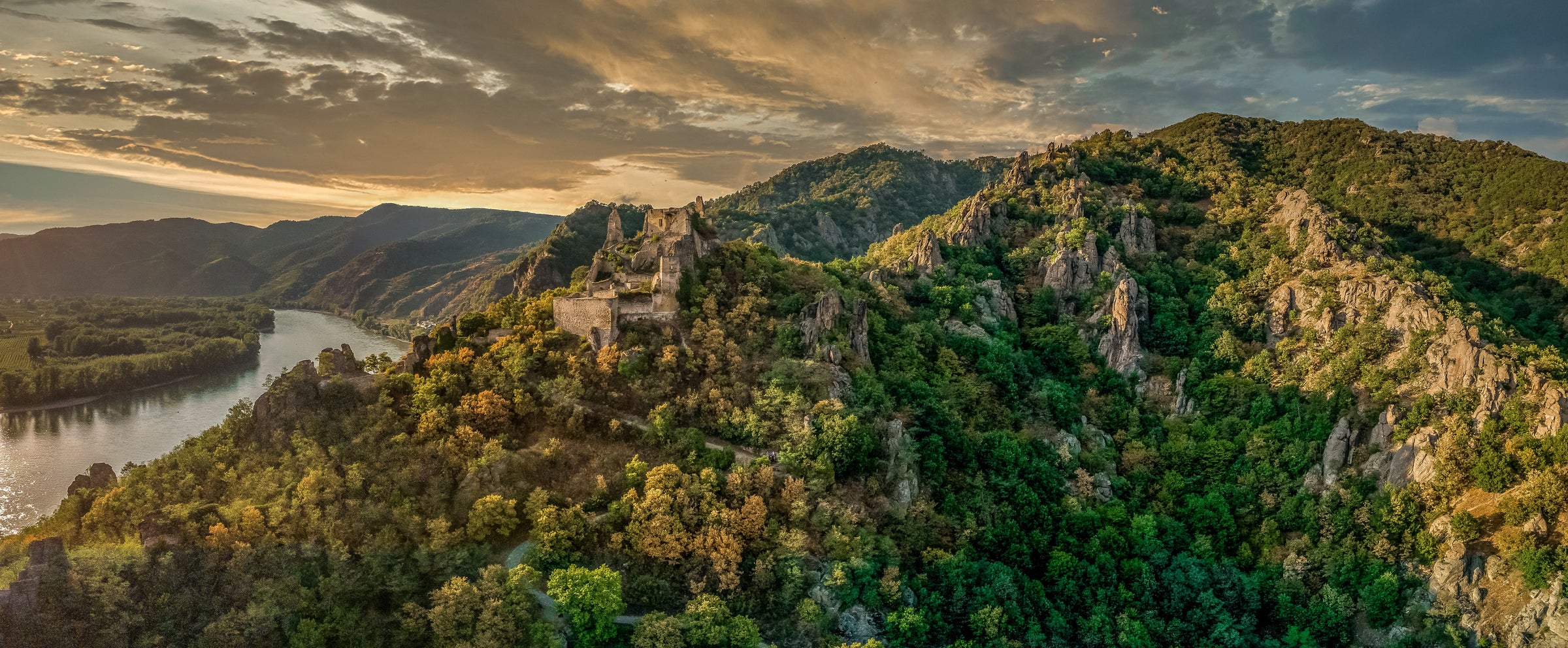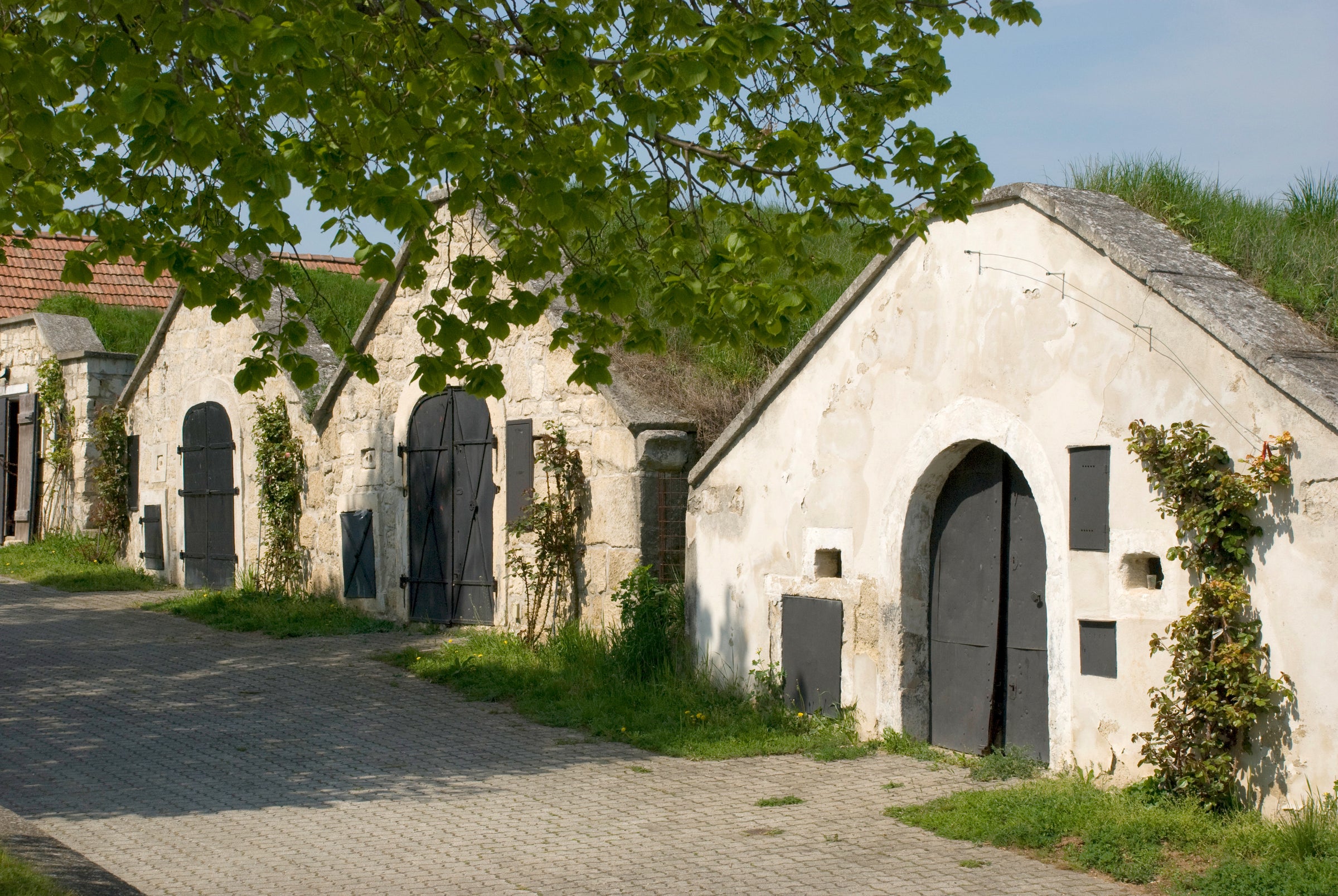It’s one of my deeply held beliefs that to produce a wine as effortlessly pleasurable as today’s Grüner Federspiel, it takes, in fact, an extraordinary amount of effort—as in, training at one of Austria’s most esteemed estates (F.X. Pichler), taking over your family’s steep terraced vineyards at the age of 20, and converting a small farmstead into one of the country’s premier viticultural operations. The result? Johann Donabaum’s diamond-etched, massively versatile Grüner, at a price that warrants repeated weeknight enjoyment.
Don’t let the humble label and modest price fool you, either—behind it lies fruit from the famed Spitzer Graben that’s ushered into bottle with all the exacting rigor bestowed on wines costing more. I’d argue Grüner Federspiel is the white-wine analog to a lovingly crafted, everyday-priced Italian red: excellent with just about any meal, with any company, and yet ready to be closely pondered, should you wish. This is a no-brainer purchase, one you’ll want to have on hand in large quantities, ready to pop at a moment’s notice!
The Donabaum estate has produced wine for five generations, focusing exclusively on grape growing since 1961, but it was only when current proprietor Johann took over that the family broke into the upper echelon of Austrian winemaking. After studying winemaking in nearby Krems, Johann worked at the legendary F.X. Pichler estate. It was largely Pichler’s Rieslings and Grüner Veltliners that established the Wachau as Austria’s premier winegrowing region, and it was near-maniacal attention to detail in the vineyard and cellar, along with a drastic reduction in yields, that got it done. Johann brought that stringent, prideful energy back to his family’s operation by purchasing plots in the most prized Wachau sites, cutting the yields in the vineyard in half, and shutting down the family’s restaurant operation to focus entirely on winemaking. The Austrian wine press quickly dubbed him a wunderkind, but that label no longer applies: after 20+ years at the helm, Johann is an established star in the Austrian firmament.
rn
While Pichler put Wachau on the map by turning out bottles of bludgeoning power—with most others in the region following suit—the Donabaum style is the mirror opposite, emphasizing glossy brilliance and filigree. Johann is located in the Spitzer Graben, the far Western edge of the Wachau, where vineyards turn down a narrow valley, away from the Danube. Rather than the fruit-infusing Southern exposure most Wachau vineyards have, the steep terraces of old vines in the Spitzer Graben face more westerly, leading to less sun penetration and a more finely-etched and mineral expression. To capture that signature shimmer, Johann eschews all botrytis in his wines, ferments this Federspiel spontaneously in stainless, and ages on the fine lees. Juicy, piquant Grüner is the result, a fantastically refreshing yet detailed dollop of spritzy goodness.
rn
A pop-and-pour at a brisk 45-50 degrees reveals a shimmering yellow-green wine with a touch of trapped effervescence that blows off after five minutes in the glass. The nose is high-toned, classic, and precise with aromas of sliced green pear, creamed apple, lime zest, white flowers, a radish-like spice, watercress, parsley, and white pepper. The medium-bodied palate has that classic Grüner Federspiel zip of refreshing acidity, balanced by a gently creamy texture from time on the lees. More citrus pith and savory pepper tones come to the fore on the palate, and the finish is long and salty, deeply reminiscent of the Spitzer Graben’s rocky terraces. This is a comforting yet complex Grüner, a bottle equally comfortable being poured liberally for a dinner party as it is studied contemplatively on its own. Pair it with gurkensalat, the Viennese cucumber salad, and revel in the Austrian brightness!








